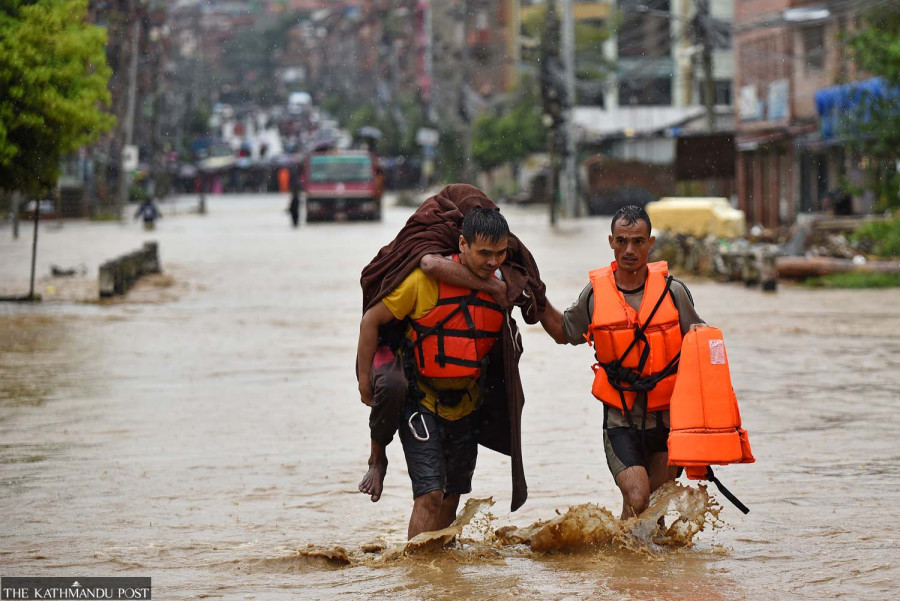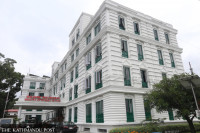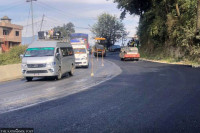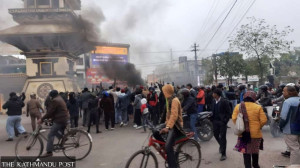National
Government declares disaster crisis zones in 14 districts
Temporary closures may be enforced, private and public resources commandeered for disaster response efforts.
Anil Giri
The government on Friday declared dozens of local units in 14 districts that were the hardest hit by last week’s monsoon havoc as ‘disaster crisis zones’. The goal is to expedite rehabilitation, recovery and reconstruction efforts there.
As per the recommendation by the National Disaster Risk Reduction and Management Authority (NDRRMA), under the Ministry of Home Affairs, a Cabinet meeting on Friday made the decision, according to a minister.
Forty-three local units of 14 mostly affected districts by the recent floods and landslides have been declared as disaster crisis zones, the minister said, with this, the government, now, can expedite the rehabilitation and reconstruction work smoothly.
Earlier on Friday, a meeting of the NDRRMA had recommended that the government declare local units severely affected by last week’s floods and landslides as ‘disaster crisis zones’. The recommendation was made during a meeting chaired by Home Minister Ramesh Lekhak and attended by government secretaries and heads of security agencies.
Minister for Communication and Information Technology Prithvi Subba Gurung who is also the government spokesperson said the government decision was based on the NDRRMA recommendation and will be executed without delay.
As per the recommendation forwarded by the NDRRMA, the most affected local units in 14 districts are declared disaster crisis zones, said the minister. “The list of these local units will be published in the Nepal Gazette, after which the decision will come into effect.”
Home ministry spokesperson Rishiram Tiwari said several local units in 14 districts—Kathmandu, Bhaktapur, Lalitpur, Sindhupalchok, Dhading, Dolakha, Ramechhap, Kavre, Makawanpur, Sindhuli, Rautahat, Taplejung, Sankhuwasabha, and Panchthar—have been badly impacted by last week’s disasters. Although 26 districts are affected, 14 are the hardest hit.
At least 238 people were killed, over two dozen went missing and some 200 were injured in recent floods and landslides, according to the home ministry. Besides the casualties, properties worth billions of rupees have been damaged. Several highways and connecting roads were also badly damaged.
This declaration will remain in effect for three months, a member of a parliamentary committee said.
“We hope that within three months, we can restore roads and other public and private structures, rehabilitate the affected people and complete other necessary tasks to bring life back to normal,” an NDRRMA member said.
The government may also order temporary closures of governmental and non-governmental offices, educational or other institutions in the designated disaster-prone areas. Likewise, measures may include banning activities that could impact rescue operations in those areas, employing government and non-governmental sector employees, and using governmental, non-governmental and private movable and immovable property for disaster response as and when needed.
If necessary, the government could even take control of the vehicles of any agency or individual in the designated crisis area and use them for relief and rescue work. The government had taken a similar approach to speed up relief, rescue and reconstruction after a devastating earthquake hit Jajarkot and Rukum districts in November 2023.
According to Section 11 of the NDRRMA Act, the government can declare certain areas of the country hit by natural disasters as crisis zones for a specified time. Such information should be published in the Nepal Gazette.
According to Minister for Physical Infrastructure and Transportation Devendra Dahal, top priority has been given to rescuing vehicles that remain stranded along the BP Highway, which has been badly damaged by the recent floods and landslides.
Speaking at a meeting of the infrastructure committee of the House of Representatives on Friday, Minister Dahal said that due to the damage to the BP Highway, hundreds of private and public vehicles are stranded and it is the government’s primary duty to rescue them.
He also said that it is also not possible to reopen the BP highway ahead of the Dashain festival, which ends on October 16. Recent floods and landslides have swept away 12 kilometres of the highway, cutting off the vital link between Kathmandu and Tarai—considered the shortest route. We have sought support from the Nepal Army for repair and maintenance of the BP Highway,” said Dahal. “We are holding a meeting with the army on Friday itself.”
Keshav Kumar Sharma, secretary at the Ministry of Physical Infrastructure and Transportation, said that they are trying their best to resume normal vehicular movement on different sections of five highways affected by the disaster.
As major highways have suffered disruptions ahead of the major festivals, the meeting has instructed the government to expedite repair and maintenance. The meeting has also instructed the government to install Bailey bridges if necessary, and to restore damaged hydropower stations and irrigation projects at the earliest.




 6.84°C Kathmandu
6.84°C Kathmandu








%20(1).jpg&w=300&height=200)






